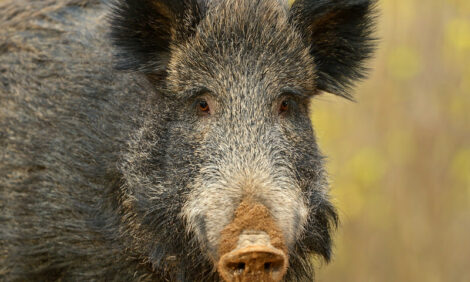



This Week's Pig Industry News
ANALYSIS - The recent setting of an internationally agreed maximum residue level for the beta-agonist, ractopamine, in pig meat has the potential to spark a new round of trade disputes at the World Trade Organization, writes Jackie Linden. Despite high feed ingredient prices, the economics of pig production in the US continue to be favourable, while UK producer margins are being squeezed into non-existence. More outbreaks of African Swine Fever have been reported in western Russia.The European Union, US and Brazil could be heading for another bitter war in the World Trade Organization over the use of ractopamine as a growth promoter for beef cattle and pigs.
Recently, Codex Alimentarius set maximum levels for the use of the drug at which the European Commission says the meat will be safe for human consumption.
In all about 27 countries around the world, including the US, Brazil, Canada, Mexico, Japan and South Korea had declared that meat from animals raised using ractopamine is safe. However, about 100 other countries including the EU and China have banned its use.
The maximum residue levels (MRLs) that have been set by Codex will allow 10 parts per billion in both beef and pork. However, these levels were set and approved by a majority of just two – 69 votes to 67 – after five years of negotiation.
The decision has been welcomed in the US, Canada and Brazil.
However, the European Union has reaffirmed its position that an international standard for ractopamine is not justified. The European Food Safety Authority (EFSA), which advises the European Union, has concluded that there is insufficient data on which to make a proposal for maximum residue levels for ractopamine and it has said that risks to human health cannot be ruled out. As a result, the EU’s current legislation will remain in place.
WTO may become the battleground for the two sides to fight out this issue, with the sanctions and bitter retaliation the likely consequences.
Pig producers in the UK have been losing money for nearly two years and the losses are getting greater, according to a new report on feed prices from the British Pig Executive (BPEX). It shows that the high and rising feed costs mean that the total cost of producing pigs is currently much higher than the price, which the farmer is receiving.
At present, farmers are losing about 318 per pig, according to the report.
The report, Feed Price Rises Put Pressure on Pig Industry, says that the cost of pig production in the UK is nearly 173p per kg. Of this amount, feed makes up 60 per cent at 109p per kg. However, these figures do not take into account recent rises in feed costs or rises in feed costs that are expected to come. BPEX believes that the cost of production is going to remain at about 166p per kg until after the harvest.
Friday the 13th proved to be a particularly unlucky day for UK pig producers as feed ingredient costs scaled new heights and pig prices start to wobble, reports Peter Crichton.
Economics of pig production in the US look healthier: Iowa State University calculations put the break-even price for markets hogs sold in June at $65.12 per cwt, the highest since December. Fortunately for producers there, hog prices jumped and the average June profit was $22.40 per head sold.
According to the latest trade figures, US pork exports in May were up three per cent in volume from a year previously and nine per cent higher in value.
Turning to the global pig disease situation, Russia has reported a total of seven new outbreaks of African Swine Fever in the Tver region in the west of the country. Wild boar and domestic pigs were affected.








